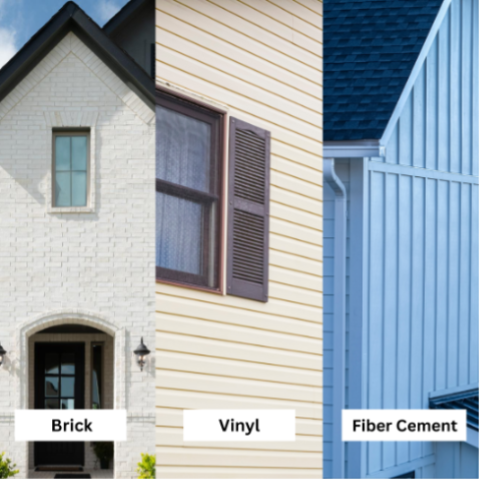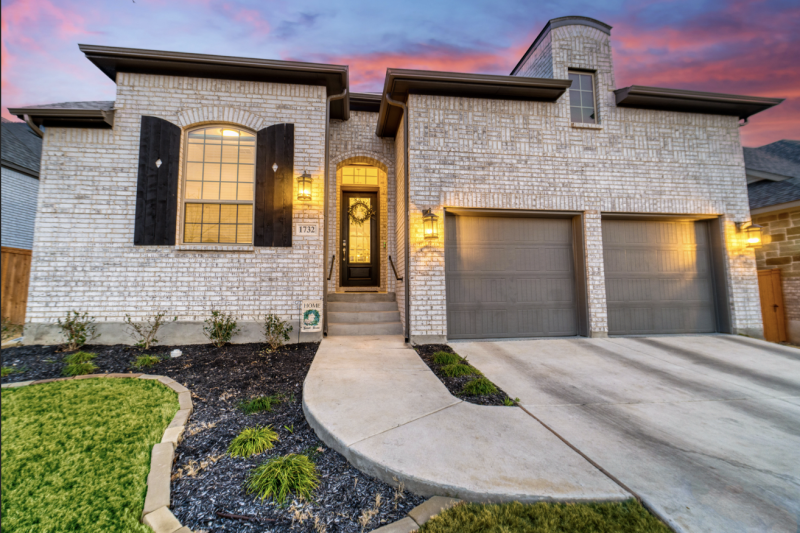
Clay Brick: An Affordable Choice for Your Home
When considering building materials for your new home, make sure you consider the bigger picture, and you know what you’re in for. Cheap cladding like vinyl may be inciting at first, but when you consider the costs of maintenance, repairs, and replacement over the course of your mortgage, the costs tend to add up quicker than you may realize.
However, when you factor the long-term benefits brick offers, brick emerges as the more affordable option for its unmatched durability and longevity. When you build with brick, you can say goodbye to a regular maintenance schedule and unforeseen expenses to repair storm damage, saving you time and money. In this blog post, we'll explore the affordability of clay brick and compare it to other popular building materials like vinyl and fiber cement.
Affordability Factors:
Durability: Brick provides an unbeatable fire rating and ideal protection against the elements to help prevent storm damage, making it a safer and more reliable building material than vinyl, stucco, and fiber cement. See how brick not only resist to harsh weather elements but bird damage as well, unlike stucco. This video shows how easy it is for birds to create holes in stucco buildings, highlighting the durability of brick: https://www.youtube.com/watch?app=desktop&v=PqS4DFo108M
Maintenance: Spend your weekends having fun rather than on upkeep or repairing other wall claddings. Regular maintenance and unexpected repair costs can burn a hole in your wallet. Brick is virtually maintenance-free over the decades, saving you time and money. Unlike other cladding, clay brick will never fade in color, melt, rot, dent, or need to be painted, and it will never tear or be eaten by termites.

Longevity: The National Institute for Standards and Technology (NIST) gives brick masonry a 100-year life, whereas other cladding will barely last half that before needing to be totally replaced. Even new homes built with vinyl siding are warping from sunlight reflected off neighbor’s energy efficient windows, stucco is peeling off the sides of new homes, and fiber cement homes are cracking and fading after a just few years of being built.
Energy Efficiency: Brick homes are naturally energy-efficient, reducing heat transfer through the wall by up to 50% saving 2% to 7% on energy bills compared to fiber cement.
Insurance Savings: Due to its exceptional durability and fire resistance, brick homes often qualify for lower insurance premiums.
Resale Value: On average, homes made of brick often have higher resale values compared to similar homes built with other materials.
Real-World Examples:

Case Study 1: Many homeowners are experiencing their vinyl side warping from sunlight reflected off their neighbor’s energy efficient windows. Now they are faced with unexpected repair costs and HOA fines for the unsightly look of their damaged vinyl siding: https://www.wsoctv.com/news/local/its-awful-looking-homeowner-says-neighbors-windows-warped-her-siding/J6TPPN25GRD5PHLC7M3URCBOEU/
Case Study 2: New fiber cement homes are fading and cracking less than a decade after being built. All across the country, homeowners are finding out that their warranty won’t cover the damage, and they are left on their own to fix it. This group of residents in Illinois are experiencing tons of cracks their fiber cement homes that are only eight years old: https://abc7chicago.com/naperville-il-cracked-siding-fiber-cement/12777026/
Case Study 3: It’s not just fiber cement and vinyl! Homeowners are seeing stucco peeling off the sides of their home and cracks that are filled with mold build-up causing their homes to rot from the inside out after just five years: https://www.wesh.com/article/local-homeowners-complain-of-mold-buildup-cracked-stucco/4447887
Comparing Costs:

While brick may sometimes have a slightly higher upfront cost compared to some other materials, the long-term savings it offers far outweigh this initial expense. The monthly mortgage payment for a 1-Story 2,100 SF four-sided brick home is only $26.79 more for a home with fiber cement and $7.55 for a home with stucco. Skipping takeout once a month could mean a lifetime of beauty & durability for your future home! The small increase in the monthly mortgage payment is an investment in your home that pays for itself many times over when considering all the benefits that a clay brick home provides.
Run your own scenario! Compare your monthly mortgage cost of brick compared to other materials and customize it to your zip code, preferred home size, and mortgage details using our Mortgage Calculator: https://www.gobrick.com/learn-about-brick/mortgage-calculator
Additional Benefits of Brick:
Beauty: Brick's timeless aesthetic adds value and curb appeal to your home for generations to come.
Sustainability: Brick is a natural, durable material that is 100% recyclable and has a low environmental impact.
Conclusion:
When considering the long-term benefits of brick, it's clear that it's an affordable investment in a building material. Its durability, minimal maintenance requirements, and longevity make it a wise investment for any homeowner. Learn more about the disadvantages of vinyl, fiber cement and stucco: https://www.gobrick.com/learn-about-brick/cladding-comparison
